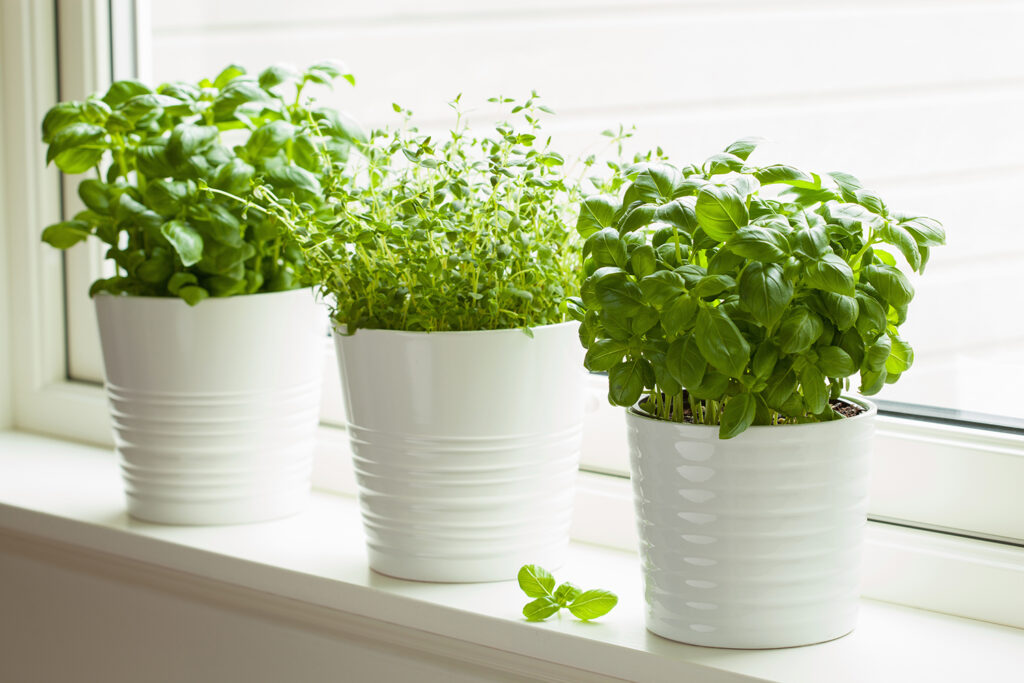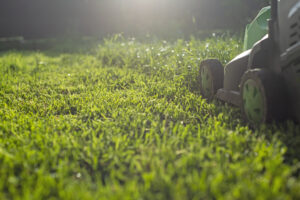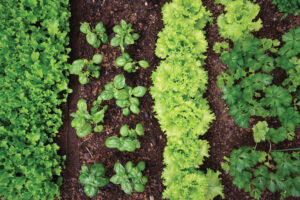Many herbs thrive in an indoor setting. From basil to parsley, many gardeners love the convenience of having fresh herbs at home. Add fresh herbs to your favorite dish to spice up your winter meals or add a garnish to your cocktail for an upscale drink. All you really need is a nice, sunny window to get started. Here are six (6) key things to consider for your DIY herb garden.
1. Pick someplace sunny:
Location, location, location. Most herbs prefer a lot of sunlight, ideally between 4-6 hours—place plants close to a south-facing window for bright light. Avoid placing your herbs in the middle of the room. This won’t give your plants enough light to thrive. In the winter, you may want to consider investing in a grow light or LED light to give your herbs some additional light. If your herbs are growing slowly or not at all, this is a good sign that they need more light.
Just like your veggies in your garden outside, indoor herbs prefer temperatures between 65-70 degrees. At night temperatures may drop by the windowsill, so make sure your windows are closed and consider adding insulation if there’s a draft.
2. Start with quality plants or seeds:
Choose quality seeds or seedlings from your local garden center. If you start with seedlings, you’ll be able to harvest more quickly. Rosemary, thyme, oregano, basil, chives, mint, and parsley are great herbs for beginners. We recommend starting from seeds, this is typically the easiest route. Read the seed packet for germination times and growing instructions.
If you want to start from cuttings, you must make sure you begin sprouting them correctly, you have to cut at the node and soak in water until new roots start to sprout. This can take a few days and be tricky if you have never done it.
3. Choose the right container:
Drainage is the most crucial factor to consider when choosing a pot for your herbs. You can use almost any type of container you’d like as long as it offers good drainage. Make sure to select the right size pot for your herb. Most herbs do well in smaller pots, like a 4” container. Shallow pots are best for herbs with shallow roots, such as chives, thyme, and oregano. For herbs like basil with longer roots, use a deeper pot. Keep in mind that the smaller the pot you choose, the faster you’ll have to re-pot it as it grows.
When growing herbs indoors, it is better to grow one type of herb in one pot. Don’t try to combine multiple herbs in a single planter. You may find that one herb needs more sunlight or less water. Planting them separately will allow you to care for each plant individually.
4. Water regularly:
It may not take much water to keep your small herbs watered, but they need to be watered regularly. Stick your finger into the soil to test the moisture. It is time to water if the top two inches of soil are dry. Like your lawn, you want your plant roots to grow deep, searching for water for a healthy root system. They should not be kept in standing water. If the leaves begin to turn yellow or wilt, cut back on your watering. Make sure your pot is draining correctly so the plant roots aren’t sitting in water.
Water more often right after planting or repotting. This will give the roots time to settle in the soil and search for water more efficiently.
5. Harvest regularly:
Encourage new growth by harvesting a few sprigs regularly. Use the herbs right away as a garnish for your dish or store them in an airtight container for later use. Or, if you’re up for it, try drying out your herbs and using them as a fragrance around your home. Herbs like chamomile, mint, and thyme are great for drying. While herbs like basil, chives, or parsley keep well when frozen.
6. Transplant when ready:
Indoor herbs are not meant to last forever in tiny pots. Eventually, they will outgrow their living space. If this happens, you can transplant them into a larger pot or outside, depending on the time of year. If you see a noticeable slowdown in growth or your plant becomes rootbound, it is time to re-pot and change the soil. Use high-quality potting soil to ensure your herbs get the right nutrients in their new pot. Repotting herbs can revitalize their growth and lead to a more bountiful harvest.


